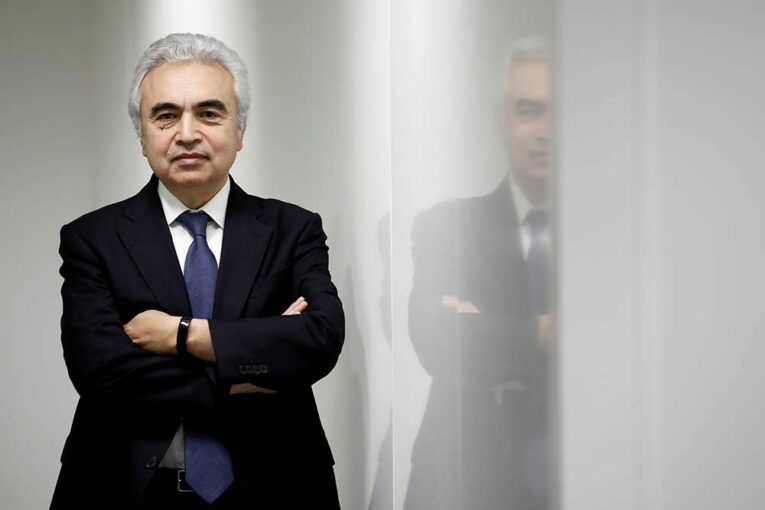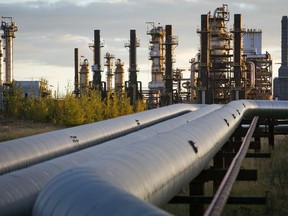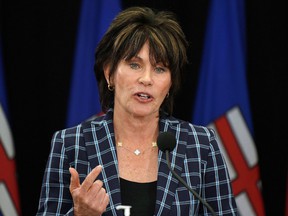
Canada needs to keep producing oil and natural gas for the world as the energy transition takes hold, but also keep lowering its greenhouse gas emissions.
While we’re at it, the country needs to make sure investment keeps rolling into the sector, while providing energy security to other consuming countries as well.
But again, don’t forget about lowering those emissions.
OK, I’m being flippant, but a new report by the International Energy Agency of Canada is full of these kinds of mixed messages.
And that’s the challenge facing policy-makers and industry today.
People around the world continue to consume more oil and natural gas, and will for decades to come. Yet, emissions must be reduced to tackle climate change.
However, as the unfolding European energy crisis underscores, there’s an immediate price to be paid if there’s not enough gas available from secured, reliable suppliers.
As Canada moves toward the goal of net-zero emissions by 2050, this is a tricky tango to master for the world’s fourth-largest oil and fifth-biggest gas producer.
It’s not quite Mission Impossible, but this message will self-destruct in five seconds.
“While we move in the direction of clean energy, Canada has to transform itself,” IEA executive director Fatih Birol told reporters Thursday.
The 266-page report from the Paris-based agency lays out the broad energy scene and reviews key policies in the country today.
Canada’s various forms of energy are a major source of exports, capital investment and jobs (about 845,000), while powering about eight per cent of the country’s GDP.
“Importantly, it is also a key contributor to stable global energy supply,” the study states.
The IEA shines a spotlight on a series of policies adopted in recent years to decarbonize the sector.
A national price on carbon. A new clean fuel standard.
A mandatory emissions cap on oil and gas companies by 2025.
And methane emissions must fall by 75 per cent by the end of this decade.
The Trudeau government has set a goal of cutting Canada’s overall emissions by 40 to 45 per cent (below 2005 levels) by the end of this decade.
And the entire country aims to achieve net-zero emissions by 2050.
“Canada is definitely (in) the top league of all those oil-producing countries when it comes to addressing our climate challenges,” said Birol.

The report issues a number of recommendations, suggesting Canada develop a national emissions reduction plan and calls for Ottawa to explore its role in bolstering electricity connections between provinces.
The feds should clearly define targets for reducing emissions in the oil and gas sector, and ensure regulations require strong liability management for companies to plug depleted wells, it states.
There’s a lot in here.
It’s clear Canada needs to lower its carbon footprint. The oil and gas sector, along with the transportation industry, are the largest sources of the country’s emissions.
From a business perspective, investors around the world are demanding action be taken and ESG considerations are gaining momentum.
The report noted oilsands producers have curbed their emissions per barrel by a third since 1990, although overall emissions have risen with higher output. Up to 27 per cent in further per-barrel cuts are expected by 2030.
The study says “Canada should pay close attention to shifting demand for oil and gas globally” as other countries adopt net-zero targets. And it “must focus on significantly decarbonizing its oil and gas sectors while at the same time ensuring competitiveness in increasingly well-supplied world markets.”
That’s a tough combination: remain competitive with other oil-producing countries that are taking less action, but do even more.
Petroleum producers and pipeline operators are responding. Six large oilsands producers are working together to reach net-zero emissions by 2050. An array of hydrogen and carbon capture projects have been proposed in the past year.
Birol also talked about the need to consider energy security and pointed to the current European gas crisis as a cautionary tale.
He noted an IEA report last year on getting to net-zero envisions global oil consumption declining from about 100 million barrels per day to about 25 million bpd by 2050.
“We will still need oil and gas for years to come. And therefore someone has to produce that oil,” Birol added.
“I prefer that oil is produced by countries that, A, produce them in a clean way and, B, they are reliable partners for the consumers.”
Alberta Energy Minister Sonya Savage said the industry and province are doing all these things, but believes the study overlooks the constitutional authority of the provinces as owners of the resource.

And it seems to minimize the future for oil and gas, she said.
“They try to conveniently leave it out, but note that Canada’s production is set to rise,” Savage said in an interview.
“There’s a lot of note (about) energy security and the need to have a secured supply of energy, but most of the report just talks about lowering emissions.”
The IEA’s report is sure to perplex producers who are trying to meet all these conflicting ambitions. It won’t satisfy those calling for increased climate action.
“They missed calling out the really big problem that needs to be solved . . . and that’s halting emission increases in oil and gas,” said Chris Severson-Baker of the Pembina Institute.
The report comes in the wake of November’s COP26 climate summit in Glasgow and growing international action.
Taken together, the IEA’s examination of Canada illustrates just how difficult it will be to satisfy a voracious global energy appetite while meeting the imperative to decarbonize.
“People talk about how we are working on a transition, but the reality about how hard it will be to get there is often never really spelled out,” said Richard Masson, chair of the World Petroleum Council in Canada.
“We are all pulling in the same direction . . . but it’s still going to be very, very difficult to get there.”
Chris Varcoe is Calgary Herald columnist.
You can read more of the news on source
